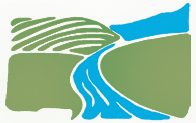 Did you know that less than 1% of all the water on Earth can be used by people? The rest is salt water or is frozen in glaciers. Communities across the country are starting to face challenges in maintaining healthy and affordable water supplies; that’s why it’s more important than ever to use our water wisely and not waste it. In addition, it takes large amounts of energy to produce and transport clean water and to process waste water.
Did you know that less than 1% of all the water on Earth can be used by people? The rest is salt water or is frozen in glaciers. Communities across the country are starting to face challenges in maintaining healthy and affordable water supplies; that’s why it’s more important than ever to use our water wisely and not waste it. In addition, it takes large amounts of energy to produce and transport clean water and to process waste water.
A typical household uses approximately 260 gallons of water every day. We can reduce this amount and save money by using water more efficiently — detecting and fixing leaky faucets, installing high efficiency clothes washers and toilets, and watering the lawn and garden with the minimum amount of water needed.
Download a Home Owners Guide Book!
Water-Efficient Appliances and Fixtures
Most of us know we can save water if we turn off the tap while brushing our teeth (as much as 3,000 gallons per year!), but did you know that there are products that will help save water when the tap is on? WaterSense and ENERGYSTAR®, programs sponsored by EPA, have identified high-performance, water-efficient appliances, fixtures, water systems, and accessories that reduce water use in the home and help preserve the nation’s water resources.
Landscaping and Irrigation
Of the 26 billion gallons of water consumed daily in the United States, approximately 7.8 billion gallons, or 30 percent, is devoted to outdoor uses. The majority of this is used for irrigation. In the summer, the amount of water used outdoors by a household can exceed the amount used for all other purposes in the entire year. This is especially true in hot, dry climates.
Many people believe that stunning gardens and beautiful lawns are only possible through extensive watering, fertilization, and pesticide application. However, eye-catching gardens and landscapes that save water, prevent pollution, and protect the environment are, in fact, easily achieved. Conservation landscaping, choosing climate-appropriate native plant species, and using water-efficient irrigation systems and practices are just a few examples of what you can do to help conserve water.
Water Quality Testing
Looking to have your water tested?
Check out this list of local government and commercial testing labs: https://waynecountynysoilandwater.org/wp-content/uploads/Water-Quality-Testing-Sites.xlsx
Please note this is not an exhaustive list, for a full list please visit this this site:
Search NY Labs – Current scope as of
Managing Stormwater
Rain rushes off roofs, pavement and compacted soil in developed areas. This rush of stormwater causes flooding downstream, erodes soil and stream banks, and muddies the water, which harms fish and other wildlife. Stormwater picks up chemicals, debris, dirt, and other pollutants and flows into a storm sewer system or directly to a lake, stream, river, wetland, or coastal water. Anything that enters most storm sewer systems is discharged untreated into the waterbodies we use for swimming, fishing and providing drinking water. Reducing irrigation water use, utilizing rain barrels and rain gardens, in combination with reducing impervious surface areas and pollutants such as pesticides, helps to minimize the negative impacts of stormwater runoff.
Water Use and Energy
You may wonder what water use and energy have to do with each other. In most cases, electricity or gas are used to heat water, and this costs you money. In addition, your water utility uses energy to purify and pump water to your home, as well as treat sewage generated by the community. Currently, about eight percent of U.S. energy demand goes to treating, pumping, and heating water, which is enough electricity to power more than 5 million homes for an entire year. Water heating also accounts for 19 percent of home energy use. By reducing your household water use, you not only reduce your water bill, but you also help to reduce the energy required to pump and treat public water supplies.
100+ Ways to Conserve Water
